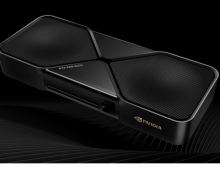
NVIDIA Scientist Releases Low-Cost, Open-Source Ventilator Design
NVIDIA Chief Scientist Bill Dally this week released an open-source design for a low-cost, easy-to-assemble mechanical ventilator.
The ventilator can be built quickly from just $400 of off-the-shelf parts, Dally says.
Traditional ventilators, by contrast, can cost more than $20,000 — and that’s when the world hasn’t been slammed with demand for the life-saving machines.
“I hope that we don’t get so many people sick that we run out of ventilators,” Dally says, speaking from a spartan home electronics workshop stocked with oscilloscopes, voltmeters and other lab equipment.
“But I want to make sure if we do, something like this is ready,” he adds.
Ventilators, of course, are needed around the world to address the medical crisis that has gripped the globe.
A mechanical ventilator keeps a patient with respiratory failure alive by pumping precisely controlled amounts of air (or an air/O2 mixture) at controlled pressure into the patients lungs. During intake (inspiration), the ventilator meters the flow of air and the duration of the flow to deliver a controlled tidal volume of air that ranges from 0.2 to 0.8L. During the exhaust (expiration) phase, the flow is turned off and a path is opened to allow the patient to exhale to the atmosphere – possibly with a positive pressure maintained (via a PEEP valve). The timing of the breaths can be entirely managed by the ventilator or a new breath can be initiated by the patient.
A ventilator is fundamentally an airflow controller with pressure constraints. The respiratory rate, breaths per minute (bpm), is adjustable from 10 to 40 and the inspiratory to expiration time (i:e) ratio is adjustable from 1 to 4. This gives an intake time that ranges from 300ms to 3s. The required flow rate is the tidal volume divided by the intake time. The usable range of settings can be achieved with an intake flow rate of 50L/min. During the intake, pressure is monitored and the flow rate is reduced as required to keep the pressure below a maximum pressure (in the range of 20-60cm H20).
Of patients that are infected with COVID-19, between 0.3 percent and 0.6 percent develop acute respiratory distress syndrome severe enough to need a mechanical ventilator, Dally explains.
Dally’s aim was to build the “simplest possible” ventilator.
His ventilator is built around just two easily sourced, key components – a proportional solenoid valve and a microcontroller to regulate the flow of gas through the valve to the patient.
Dally began exploring how to make a contribution after NVIDIA CEO Jensen Huang called on company leaders to look for ways to help with the COVID-19 pandemic.
Dally built the first prototypes of his design in his home workshop. He went online and ordered a solenoid valve, which uses an electromagnet to squeeze a valve open and shut.
Then he pulled the microcontroller, a cheap, stripped-down computer, out of the home-brewed cooling system he’d built for his wine cellar.
After pulling a couple of late nighters in his home electronics workshop — and cranking out several thousand lines of code — Dally had a working prototype built from common pipe fittings and a few easily obtained valves.
To continue moving the project forward, Dally dipped into the expertise of contacts across a wide range of disciplines. He gathered input from Dr. Andrew Moore, a chief resident at the Stanford University School of Medicine, Dr. Bryant Lin, a prominent medical devices expert and founder of two companies, and anesthesiologist Dr. Ruth Fanning.
Dally turned to Dr. David Gaba a top expert in immersive and simulation-based learning, to test the device’s capabilities.
On Friday, April 17, Dr. Gaba tested a prototype on a sophisticated lung simulator, modeling normal and two levels of COVID-19 lung disease with a wide variety of ventilator settings.
It worked as expected, Dally reports.
Dally reports he can bolt the device’s pneumatic components together in 5 minutes. The entire ventilator can be attached to a simple display and slid into a compact Pelican carrying case.
It provides better care than “bag squeezer” emergency ventilators because it precisely regulates flow, pressure, and volume, Dally says. It also uses fewer parts and less power, and it’s lower cost.
It includes sensors that accurately meter airflow, compensate for valve inaccuracy, control maximum pressure, enable patient-initiated breathing, and monitor for alarm conditions, among other features.
Dally’s now in the process of navigating the paperwork needed for emergency use authorization from the U.S. Food and Drug Administration.
After that, the next step will be to find a way to start building these.
You can read Bill Dally’s paper detailing his open-source design here.





















